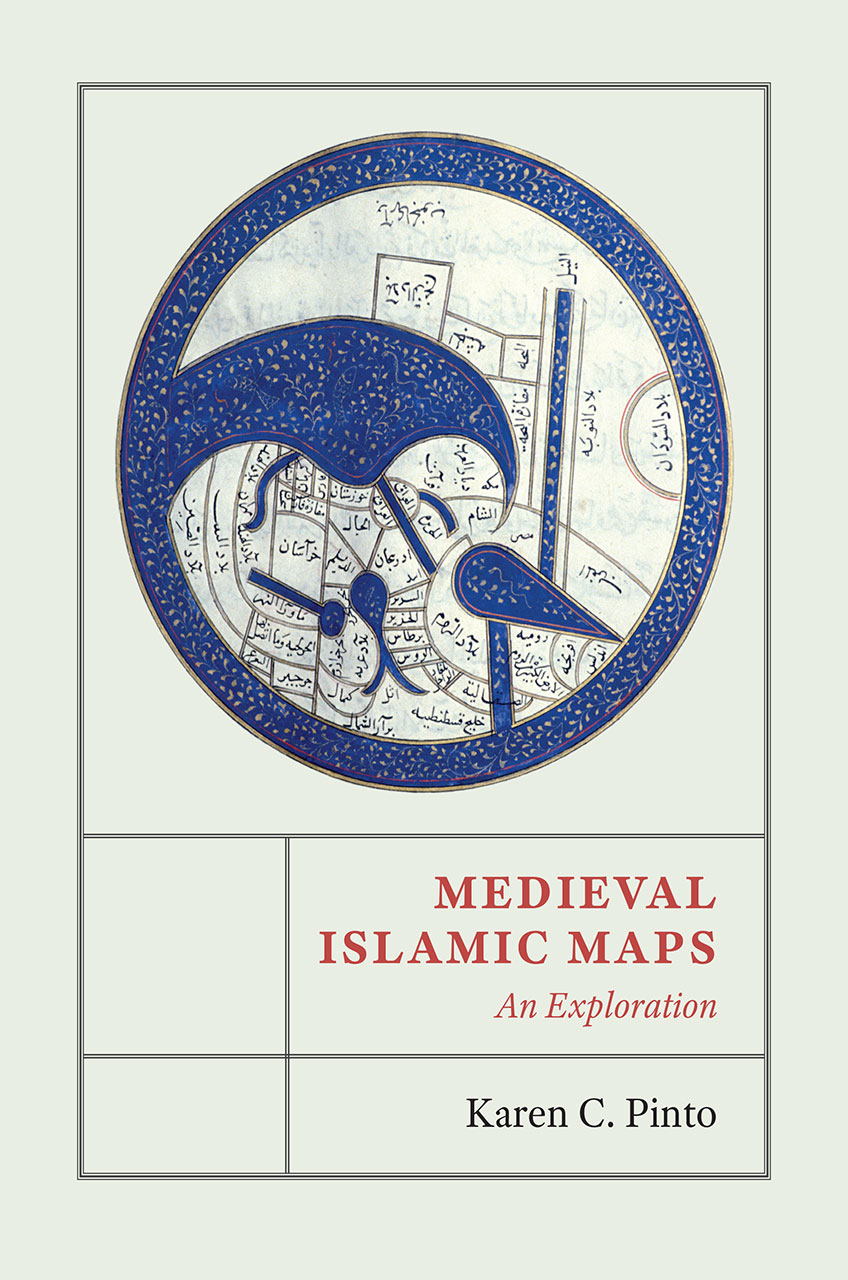Mapping the Medieval World in Islamic Cartography
with Karen Pinto
hosted by Nir Shafir
Podcast Feed | iTunes | Hipcast | Soundcloud
Hundreds of cartographic images of the world and its regions exist scattered throughout collections of medieval and early modern Arabic, Persian, and Turkish manuscripts. The sheer number of these extant maps tells us that from the thirteenth century onward, when these map-manuscripts began to proliferate, visually depicting the world became a major preoccupation of medieval Muslim scholars. However, these cartographers did not strive for mimesis, that is, representation or imitation of the real world. These schematic, geometric, and often symmetrical images of the world are iconographic representations—‘carto-ideographs’—of how medieval Muslim cartographic artists and their patrons perceived their world and chose to represent and disseminate this perception. In this podcast, we sit down with Karen Pinto to discuss the maps found in the cartographically illustrated Kitāb al-Masālik wa-al-Mamālik (Book of Routes and Realms) tradition, which is the first known geographic atlas of maps, its influence on Ottoman cartography, and how basic versions of these carto-ideographs were transported back to villages and far-flung areas of the Islamic empire.
STREAMING AUDIO
via Soundcloud
STREAMING AUDIO
via Soundcloud
PARTICIPANT BIOS
 |
Karen Pinto is Assistant Professor in the Department of History at Boise State University. She specializes in the history of Islamic cartography and its intersections between Ottoman, European, and other world cartographic traditions (see academia.edu) |
 |
Nir Shafir is a doctoral candidate at UCLA studying Ottoman intellectual history (see academia.edu) |
CREDITS
Episode No. 220
Release Date: 12 January 2016
Recording Location: Brown University
Editing by Onur Engin (funded by a paid assistantship at Koç University under the supervision of Nina Ergin)
Music and sound samples: Bekir Sıdkı - Lerzan ediyor ruhumu cesmindeki efsun; BBC Sound Effects Vol.46 - Istanbul; Selma Sağbaş - Cok surmedi gecti tarab-i sevk-i baharim
Images courtesy of Leiden University Library
SELECT PUBLICATIONS OF KAREN PINTO
Medieval Islamic Maps: An Exploration (The University of Chicago Press, 2016)
“Passion and conflict: Medieval Islamic views of the West" in Mapping Medieval Geographies, ed. Keith Lilley, (Cambridge University Press, 2014), 201-224.
“Searchin’ his eyes, lookin’ for traces: Piri Reis’ World Map of 1513 & Its Islamic Iconographic Connections (A Reading Through Bağdat 334 and Proust),” Journal of Ottoman Studies, 39:1, 2012, 63-94.
"The Maps Are The Message: Mehmet II’s Patronage of an ‘Ottoman Cluster,’" Imago Mundi, 63:2, 2011, 155-179.
 |
| Karen Pinto Medieval Islamic Maps University of Chicago Press, 2016 |
“Passion and conflict: Medieval Islamic views of the West" in Mapping Medieval Geographies, ed. Keith Lilley, (Cambridge University Press, 2014), 201-224.
“Searchin’ his eyes, lookin’ for traces: Piri Reis’ World Map of 1513 & Its Islamic Iconographic Connections (A Reading Through Bağdat 334 and Proust),” Journal of Ottoman Studies, 39:1, 2012, 63-94.
"The Maps Are The Message: Mehmet II’s Patronage of an ‘Ottoman Cluster,’" Imago Mundi, 63:2, 2011, 155-179.












Comments
okhoja@gmail.com
Post a Comment
Due to an overwhelming amount of spam, we no longer read comments submitted to the blog.